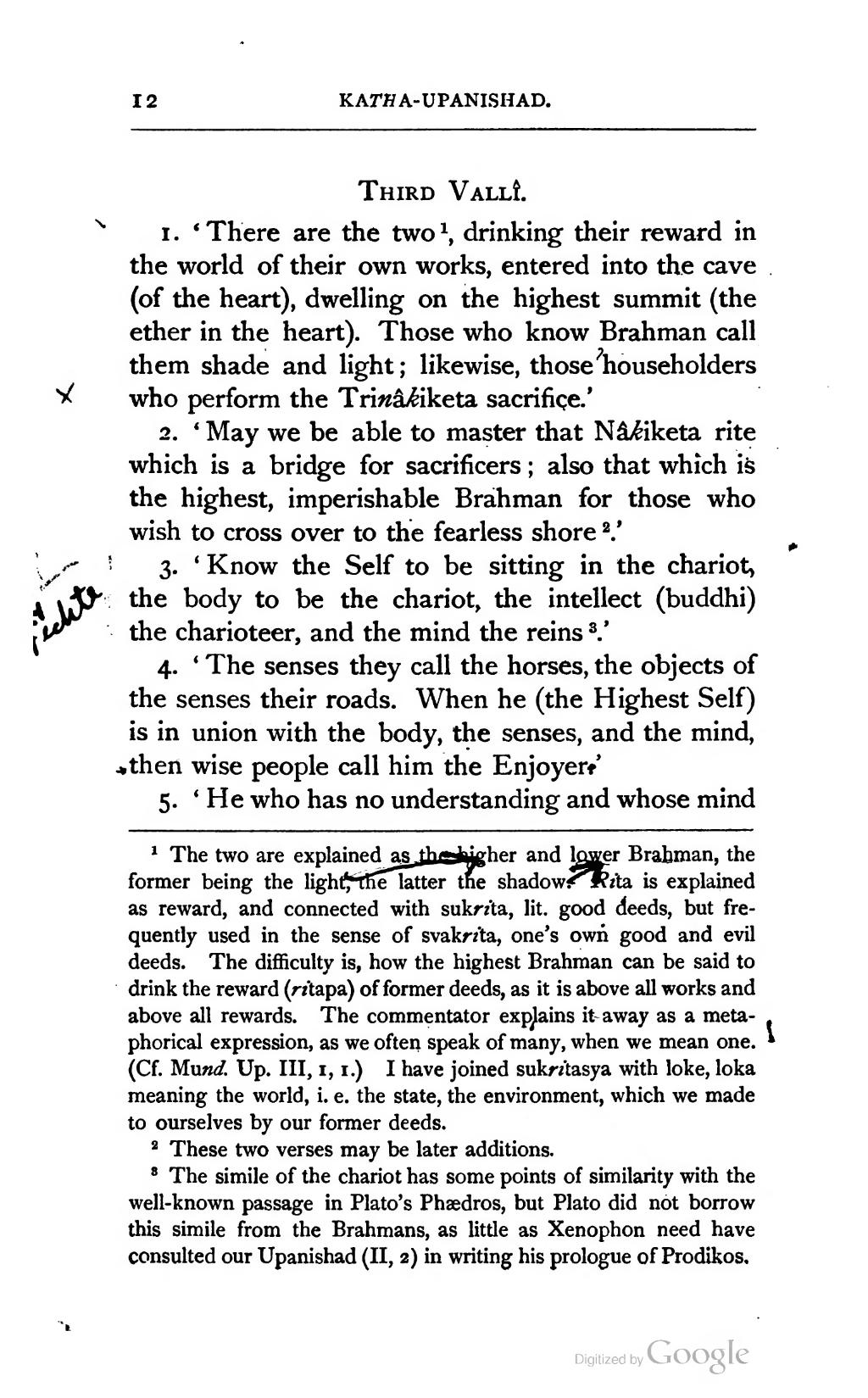THIRD Vallî
1. "There are the two[1], drinking their reward in the world of their own works, entered into the cave (of the heart), dwelling on the highest summit (the ether in the heart). Those who know Brahman call them shade and light; likewise, those householders who perform the Trinâkiketa sacrifice.
2. May we be able to master that Nâkiketa rite which is a bridge for sacrificers; also that which is the highest, imperishable Brahman for those who wish to cross over to the fearless shore[2].
3. Know the Self to be sitting in the chariot, the body to be the chariot, the intellect (buddhi) the charioteer, and the mind the reins[3].
4. The senses they call the horses, the objects of the senses their roads. When he (the Highest Self) is in union with the body, the senses, and the mind, then wise people call him the Enjoyer.
5. He who has no understanding and whose mind
- ↑ The two are explained as the higher and lower Brahman, the former being the light, the latter the shadow. Rita is explained as reward, and connected with sukrita, lit. good deeds, but frequently used in the sense of svakrita, one's own good and evil deeds. The difficulty is, how the highest Brahman can be said to drink the reward (ritapa) of former deeds, as it is above all works and above all rewards. The commentator explains it away as a metaphorical expression, as we often speak of many, when we mean one. (Cf. Mund. Up. III, 1, 1.) I have joined sukritasya with loke, loka meaning the world, i.e. the state, the environment, which we made to ourselves by our former deeds.
- ↑ These two verses may be later additions.
- ↑ The simile of the chariot has some points of similarity with the well-known passage in Plato's Phaedros, but Plato did not borrow this simile from the Brahmans, as little as Xenophon need have consulted our Upanishad (II, 2) in writing his prologue of Prodikos.
